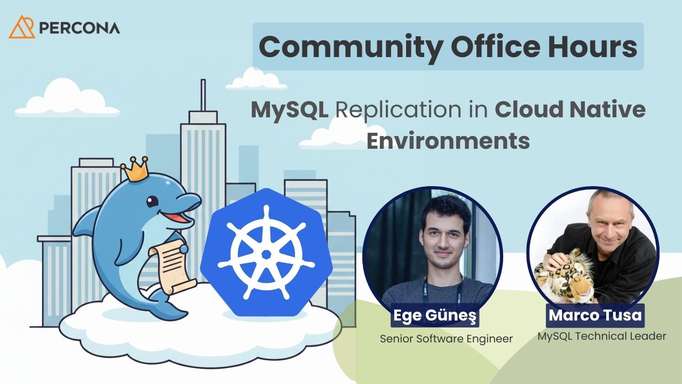Percona co-organized a MySQL Meetup with Oracle in São Paulo on December 2nd.

We had a full day of talks on the most diverse topics about MySQL, ranging from open source tools to the Oracle cloud, and networking.
Talks will be presented in Portuguese. Below is the event agenda:
- Evaluating Large Data Loads and Analysis with MySQL HeatWave Lakehouse by Narciso Oliveira Júnior (Oracle)
As the number of data and connected devices grows, the demand for a better user experience and value-added services increases. AI plays an increasingly important role in this search. The development of AI models requires efficient pre-processing of the large amount of data generated by the most diverse devices. MySQL HeatWave, specifically the Lakehouse feature, provides an efficient solution by improving data I/O operations by loading data directly from in-memory object storage. Learn how MySQL HeatWave Lakehouse is used to efficiently load, analyze, and run Machine Learning algorithms on large amounts of heterogeneous data, as we discuss the implications for building a flexible data analytics platform using MySQL on OCI.
- MySQL Shell for Database Engineers: The Best MySQL Administration Tool by Herbert Rogério Bezerra de Menezes (Oracle)
Description: MySQL Shell is an advanced client and code editor for MySQL. This presentation will show you the main features of MySQL Shell. In addition to SQL functionality, similar to the mysql client, MySQL Shell provides scripting capabilities for JavaScript and Python and includes APIs for working with MySQL X DevAPI allows you to work with relational and document data, AdminAPI allows you to work with InnoDB Cluster, InnoDB ClusterSet and InnoDB ReplicaSet, as well as extremely fast and secure backup and restore tools!
- ProxySQL on MySQL: Just a load balancer? by Roberto Garcia de Bem (Support Engineer, Percona)
ProxySQL is an open source proxy designed for MySQL, capable of communicating through the MySQL protocol, most often used as a load balancer. In addition to its functionalities as a load balancer, ProxySQL offers a large number of features (Multiplexing, Query Rules, Query Rewriting, Failover detection, ProxySQL Cluster, among others) that can be of great use in our daily activities. During the presentation, we will show some of its capabilities and potential uses, exploring its architecture and configuration layers. Furthermore, Roberto will demonstrate the installation and configuration process in different possible architectures (Simple Replica, PXC/Galera, Group Replication).
- Tools and methods for performance analysis in MySQL by Leonardo Bacchi Fernandes (Senior Support Engineer, Percona)
In this presentation, we will discuss where to start and what we have at our disposal to carry out a performance analysis in MySQL. Using real cases as a basis, we will review some key Linux commands (vmstat, iostat, top, etc.) and how to use resources in the operating system directs our analysis of the database. We will see some commands and tools that MySQL has for analysis (SHOW PROCESSLIST, SHOW ENGINE INNODB STATUS, mysqladmin, pt-stalk, slow query log, etc.), and when to use them. Finally, we will discuss some more advanced tools that we can use for complex problems, when MySQL commands are not enough to understand the problem (perf, flamegraphs, pt-pmp, coredumps).
- Data Center Migration to Oracle OCI Brazil: MySQL 8 Optimization by Ricardo Rodrigues (2com Consulting)
This case highlights the successful migration to Oracle Cloud Infrastructure (OCI) in Brazil, where challenges included long backup times, interruptions due to routing problems and blockages in the production environment. With the adoption of the XtraBackup and MyDumper tools for backup optimization, an impressive reduction in backup time was achieved, from 18 hours to just 2 hours. In addition, the migration to OCI allowed all backup operations to be carried out efficiently in the standby environment, guaranteeing the continuity of services in the production environment.
And at the end of the day, all attendees were able to visit the Oracle data center.








